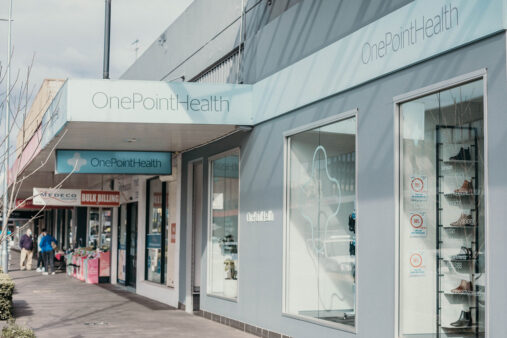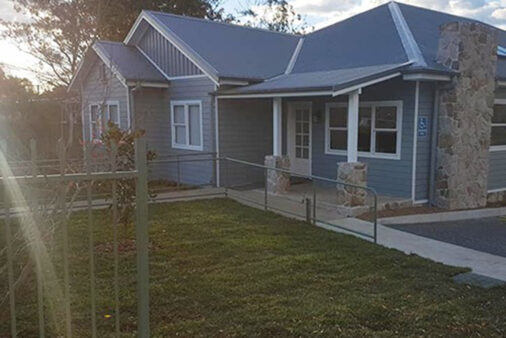Relieve your shoulder discomfort with OnePointHealth’s targeted physiotherapy solutions, designed to effectively treat shoulder impingement and restore your mobility and strength through personalised care and rehabilitation strategies.
What is Shoulder Impingement?
There are a number of causes of shoulder impingement. Most commonly it is a condition that occurs when the tendons of the rotator cuff muscles in the shoulder become pinched or compressed. The rotator cuff is a group of muscles and tendons that surround the shoulder joint, providing stability and allowing for a wide range of motion. The impingement typically happens in the space between the top of the upper arm bone (humerus) and the acromion, which is a bony projection of the shoulder blade.
The sub acromial bursa is another structure which can get pinched in this space, becoming inflamed and causing shoulder impingement. When the space between the acromion and the humerus narrows, either due to anatomical variations, inflammation, or overuse, the tendons of the rotator cuff can get pinched during certain shoulder movements. This can lead to irritation, inflammation, and pain in the shoulder.
Common causes of Shoulder Impingement include:
- Overuse or Repetitive Motion: Activities that involve repeated overhead arm movements, such as throwing, swimming, or weightlifting, can contribute to shoulder impingement.
- Anatomical Factors: Some individuals may have anatomical variations, such as a hooked or curved acromion, which can increase the risk of impingement.
- Muscle Imbalances: Weakness or imbalance in the muscles around the shoulder, particularly the rotator cuff muscles, can contribute to impingement.
- Age-related Changes: As people age, the tendons of the rotator cuff can undergo degenerative changes, making them more prone to irritation and impingement.
Symptoms of Shoulder Impingement
Symptoms of shoulder impingement may include pain, especially when lifting the arm, weakness in the affected shoulder, and a decrease in range of motion.
Treatment of Shoulder Impingement
The treatment of shoulder impingement often involves a combination of self-care measures, physical therapy, and, in some cases, medical interventions. Here are some general guidelines for treating shoulder impingement:
- Activity Modification:
- Identify activities that can irritate the shoulder is important..
- Modifying these activities that worsen the pain can help in the initial healing process.
- Modify your daily activities to reduce strain on the shoulder.
- Over-the-Counter Pain Medications:
- Nonsteroidal anti-inflammatory drugs (NSAIDs), such as ibuprofen or naproxen, can help alleviate pain and reduce inflammation. Always follow the recommended dosage and consult with a healthcare professional if you have any concerns.
- Physiotherapy:
- Work with a physiotherapist to strengthen the muscles around the shoulder, particularly the rotator cuff muscles. A trained professional can assist in activity modification.
- Improve shoulder joint flexibility and range of motion through targeted exercises.
- Learn proper body mechanics and techniques for activities that involve the shoulder.
- Corticosteroid Injections:
- In some cases, a healthcare provider may recommend corticosteroid injections into the shoulder joint to reduce inflammation and relieve pain. This should only be used where the cause of the impingement is an inflamed bursa.
- Injections into tendons is not recommended.
- Home Exercises:
- Perform prescribed home exercises regularly to maintain strength and flexibility.
- Focus on exercises that strengthen the rotator cuff muscles and improve shoulder stability.
- Posture Correction:
- Maintain good posture to reduce stress on the shoulder.
- Be conscious of your shoulder position during various activities especially where your upper limb is used repetitively.
- Surgical Intervention:
- In cases where conservative measures are not effective, or if there is significant structural damage, surgery may be considered. Surgical options may include subacromial decompression to create more space in the shoulder joint.
It’s essential to consult with a healthcare professional, such as an orthopaedic doctor or a physiotherapist, for a thorough evaluation and personalized treatment plan. They can provide specific guidance based on the severity of your shoulder impingement and your individual needs. Early intervention and consistent adherence to the recommended treatment plan are crucial for a successful recovery.
Can Shoulder Impingements Reoccur
Yes, shoulder impingements can recur, especially if the underlying causes and contributing factors are not addressed or if there is a return to activities that place excessive stress on the shoulder. Recurrence can happen for various reasons:
- Incomplete Healing: If the initial shoulder impingement is not allowed sufficient time to heal, or if rehabilitation exercises are not consistently followed, there may be residual weakness or instability, making the shoulder susceptible to reinjury.
- Overuse or Poor Technique: Engaging in activities that involve repetitive overhead movements or using poor technique during exercises can contribute to the recurrence of shoulder impingement.
- Muscle Imbalances: Failure to address muscle imbalances around the shoulder joint, particularly the rotator cuff muscles, can lead to ongoing issues and a higher risk of recurrence.
- Poor Posture: Maintaining poor posture, especially during activities that involve the shoulder, can contribute to the recurrence of impingement.
- Anatomical Factors: Some individuals may have anatomical variations, such as a naturally curved or hooked acromion, that predispose them to shoulder impingement. In such cases, diligent management and preventive measures are important.
To reduce the risk of recurrence, it’s important to follow the recommendations of healthcare professionals, including physiotherapists and orthopaedic specialists. This may involve:
- Completing a full course of rehabilitation exercises to strengthen the shoulder muscles and improve range of motion.
- Implementing proper body mechanics and technique during physical activities.
- Gradually returning to activities and avoiding sudden increases in intensity or volume.
- Maintaining good posture, especially during activities that involve the shoulder.
- Listening to your body and avoiding activities that cause pain or discomfort.
Regular follow-ups with healthcare providers and periodic reassessment of shoulder function can help identify and address any issues before they escalate. If shoulder pain or symptoms persist or recur, it’s important to consult with a healthcare professional for further evaluation and guidance. The team at One Point Health can help.












